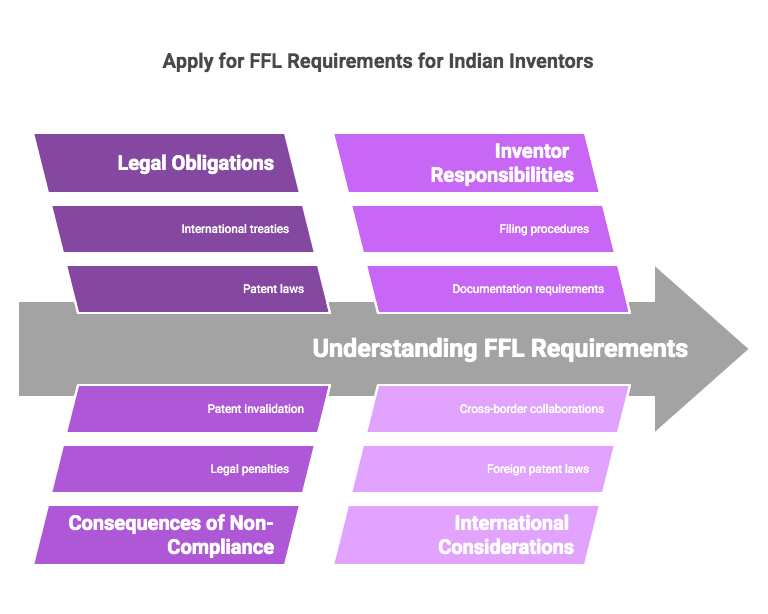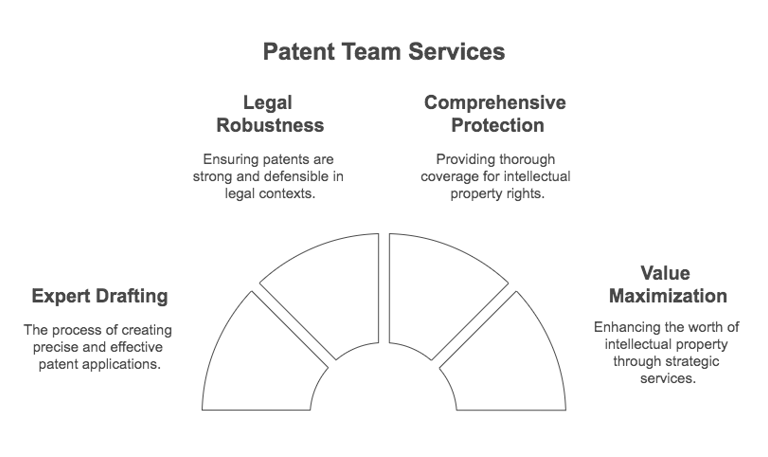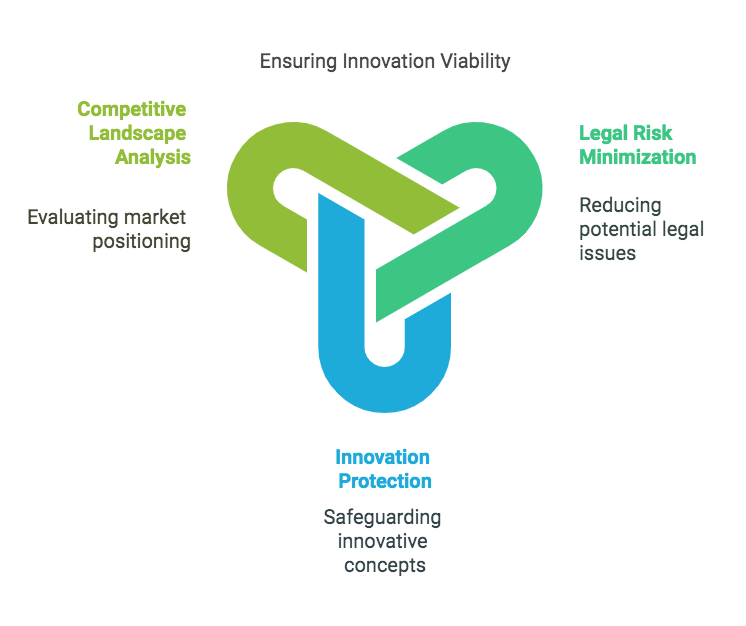🛡️ Protect your ideas and inventions with the guardians of intellectual property.
⚖️ Our team of expert patent attorneys marshals your innovations through the complex patent landscape💡


Blockchain Meets Patents WSIS 2025: The Future of Intellectual Property in India 🔗🔗🔗🔗
#BlockchainTech #IPRights #FutureTech
Evolution of Intellectual Property Rights in India: A Focus on the Indian Patent Act and Blockchain Technology 📜✨
In recent years, the landscape of intellectual property rights (IPR) in India has undergone significant changes, primarily driven by amendments to the Indian Patent Act of 1970. These changes aim to streamline the patent process, enhance innovation, and address the growing complexities of intellectual property management in the digital age. 🚀
The Indian Patent Act 1970 and Recent Amendments 📚
The Indian Patent Act, first enacted in 1970, has been a cornerstone of intellectual property law in the country. Over the years, it has been amended several times to adapt to the evolving needs of innovation and technology. The most recent amendments, introduced in 2024, have particularly focused on simplifying the patent application process and reducing bureaucratic hurdles. 📝
One of the key changes involves the filing frequency and timelines for Form 27, a crucial document in the patent process. Previously, this form required annual submissions, but the 2024 amendments have extended the interval to once every three years.
This change aims to reduce the administrative burden on applicants while maintaining the transparency and accountability of the patent process. 📅
The Role of Form 27 in IPO 📋
Form 27 has always been an essential part of the patent protocol in India. It provides a detailed overview of the status of an invention, including whether it is active, seeking licensing, or undergoing other stages of development. The form ensures that the patent process remains transparent and that all stakeholders are informed about the progress of an invention. 📈
The amendments have also introduced penalties for non-compliance, with fines reaching up to ₹1 lakh for late submissions. This measure is intended to ensure that applicants adhere to the timelines and maintain the integrity of the patent process. ⚖️
Global Standards and Simplification 🌍
The discussion around the Indian Patent Act often highlights the need to align with global standards. Patent processes vary significantly across countries, and India’s approach has been to simplify and standardize its forms and procedures. This alignment is crucial for attracting international investment and fostering a conducive environment for innovation. 🌐
The Impact of Blockchain Technology 🧑💻
A significant aspect of the recent amendments is the integration of blockchain technology into the patent process. Blockchain, known for its transparency and immutability, offers a robust solution for managing intellectual property rights. By leveraging blockchain, the patent process can become more secure, transparent, and efficient. 🔗
Blockchain technology can also help in reducing the incidence of intellectual property infringement, a persistent issue in India. By providing a decentralized and tamper-proof record of innovations, blockchain can ensure that intellectual property rights are respected and protected. 🛡️
The Importance of Simplification 🛠️
The need to simplify the patent process cannot be overstated. The complexity of patent forms and procedures often deters potential innovators and entrepreneurs.
By simplifying forms like Form 27 and reducing bureaucratic hurdles, the Indian Patent Act aims to make the process more accessible and efficient. 🚀 🎉
The recent amendments to the Indian Patent Act represent a significant step forward in the country’s approach to intellectual property rights. By simplifying the patent process, aligning with global standards, and integrating advanced technologies like blockchain, India is positioning itself as a leader in innovation and intellectual property management. 🌟
As the country continues to evolve its legal framework, the focus remains on fostering a conducive environment for innovation and ensuring that intellectual property rights are protected and respected. The journey of the Indian Patent Act is a testament to the country’s commitment to promoting innovation and safeguarding the rights of inventors and creators. 🌐✨
Smart contracts are powerful container tools for automating decentralized processes, but they often require custom logic to handle unique constraints.
We’ll explore how to design a smart contract that avoids using the numbers 29 and 30 for a fixed period of 20 days. This could be useful for scenarios like avoiding certain calendar dates, excluding values in a game, or adhering to compliance rules.
Why Exclude 29 and 30?
While the use case may vary, let’s assume the goal is to enforce a 20-day period where transactions or operations involving the numbers 29 and 30 are prohibited.
For example: - A decentralized application (dApp) might want to block token transfers on specific dates.
- A voting system could exclude certain proposal IDs temporarily.
- A blockchain game might disable levels or items linked to these numbers.
Designing the Smart Contract
The contract must:
1. Track the start and end of the 20-day time period is time stamp.
2. Validate inputs to ensure 29, 56, 93, 12 and 30 are not used during this timeframe.
3. Revert transactions if the forbidden numbers are submitted.
Element LIST
1. Start and End Timestamps:
- Use `block.timestamp` to define the 20-day window.
2. Modifier for Validation:
- A custom modifier checks if the current time is within the exclusion period and if the input is 29 or 30.
3. Submission Function:
- Allow users to submit numbers, but block 29/30 during the 20 days.
Solidity Code Example
```solidity
// SPDX-License-Identifier: MIT
pragma solidity ^0.8.0;
contract NumberExclusion {
uint256 public constant EXCLUSION_PERIOD = 20 days; // 20 days in seconds
uint256 public exclusionStartTime;
uint256 public exclusionEndTime;
event NumberSubmitted(uint256 number, uint256 timestamp);
constructor() {
exclusionStartTime = block.timestamp;
exclusionEndTime = exclusionStartTime + EXCLUSION_PERIOD;
}
// Modifier to check if the number is allowed
modifier checkNumber(uint256 _number) {
bool isExclusionActive = block.timestamp < exclusionEndTime;
bool isForbiddenNumber = (_number == 29 || _number == 30);
require(
!isExclusionActive || !isForbiddenNumber,
"Forbidden number during exclusion period!"
);
_;
}
// Function to submit a number (after validation)
function submitNumber(uint256 number) external checkNumber(number) {
emit NumberSubmitted(_number, block.timestamp);
}
// Helper function to check exclusion status
function isExclusionActive() external view returns (bool) {
return block.timestamp < exclusionEndTime;
}
}How It Works
1. Initialization:
- The contract initializes with `exclusionStartTime` set to the current block timestamp.
- `exclusionEndTime` is set to 20 days later.
2. Modifier Logic:
- The `checkNumber` modifier checks two conditions:
- Is the exclusion period still active?
- Is the submitted number 29 or 30?
- If both conditions are true, the transaction reverts with an error.
3. Submission Function:
- Users can call `submitNumber(uint256 _number)`, which triggers the modifier.
- Valid numbers (not 29/30) are logged via the `NumberSubmitted` event.
4. Status Check:
- The `isExclusionActive()` function lets users verify if the exclusion period is ongoing.
1. Test Edge Cases:
- Test the contract on a testnet to ensure it correctly blocks 29/30 during the 20 days.
2. Gas Efficiency:
- Use constants (`EXCLUSION_PERIOD`) to avoid recalculating values repeatedly.
3. Security:
- Add access controls (e.g., `onlyOwner`) if administrative functions are needed.
By combining modifiers, timestamps, and conditional logic, this smart contract effectively excludes the numbers 29 and 30 for 20 days. Customizing such constraints ensures compliance with specific rules while maintaining decentralization.
For more complex scenarios, consider extending this pattern to exclude ranges of numbers or dates dynamically 🛠️🔒
How It Works in Practice 🚀
Picture this: You’re working on a cloud-based project. The blockchain system logs your connection, creating a unique digital footprint. If your device suddenly tries to access a dark web marketplace, the system flags it instantly, blocking the request and alerting administrators. All activities are recorded on the blockchain, creating an immutable audit trail.
Why This Matters to You 💡
Safer Transactions: Your online activities become more secure, reducing the risk of fraud. 🔒
Accountability: Criminals can’t hide behind anonymous transactions. 👮♂️
Privacy Protection: Only suspicious activities are flagged; normal use remains private. 👀
The Future of a Safer Internet 🌟
While blockchain isn’t a magic solution, it offers a powerful tool to enhance online safety. By combining transparency, smart identity tracking, and real-time threat detection, we can make the dark web a far less appealing place for criminals.
Call to Action 🙌
Supporting blockchain-based security initiatives isn’t just for tech experts. By advocating for transparency and smarter digital policies, we can all contribute to a safer online world. Together, we can turn the tide against the dark web—one transaction at a time. 🌐✨
#BlockchainVsDarkWeb #DigitalSecurity #CybercrimePrevention #TransparentInternet #IdentityFirewall #FutureOfSecurity#EndDarkWeb #SmartSecurity #CyberAwareness #DigitalAccountability #AsktheCaptain
Why Us
Cost-Effective Service Delivery & Optimized Resource Allocation
Our working model achieves cost savings through:
Strategic distribution of technical tasks
Efficient workflow management
Time zone advantages for faster turnaround
Reduced overhead costs
Economies of scale
Transparent Pricing Structure
We offer clear pricing models that reflect our cost advantages:
Fixed-fee arrangements for standard services
Customized packages for portfolio clients
Volume-based discounting
Flexible engagement models


Ms Khastgir lectured at an IP training program I attended. She lectured on the topic of IP Management for SMEs and ensured that we understand the responsibilities that were involved in owning IP rights. Ms Khastgir was very knowledgeable and effective in educating the participants of the session.
Nicholas Gayahpersad Patent Examiner at Intellectual Property Office Trinidad and Tobago


★★★★★
International Patent Services
Expert patent searches and analysis for global intellectual property protection performed by international patent attorney.


Patent Drafting Experts
Our patent team specializes in turning innovative concepts into strong patent applications that provide thorough protection for your intellectual property.
A common problem faced by inventors is the difficulty of navigating the complexities of patent law, which can lead to inadequate protection and lost opportunities. The fact is that well-crafted patent applications are essential for maximizing the value of your inventions.
Our solution lies in our expert drafting and patent prosecution services in multiple countries, which ensure that your applications are not only legally robust but also strategically positioned to enhance the overall value of your intellectual property.


Handling Legal Risk around Patenting
Our patent attorneys and patent engineers perform freedom-to-operate investigations to minimize legal risks associated with your innovations, ensuring that your innovative concepts are viable and protected in the competitive landscape of intellectual property in one or more jurisdictions.
Patenting in India & US
Expert patent searches for innovative business solutions by international patent lawyers and registered patent agents having expertise to perform different patentability searches.
The materials on this website are made available for informational purposes only, and do not constitute legal advice. The receipt of information contained on this website does not create an attorney-client relationship.
PATENT Value PROPOSITION
+91-9312315656
SATELLITE OFFICES
Intellectual Property Rights SERVICES


IT CORNER GLOBAL SERVICES
© 2017-2026 and BEYOND. All rights reserved.
Unauthorized copying, reproduction, distribution, or commercial use of this content is prohibited. The views and analyses expressed herein regarding China, India, and Foxconn are proprietary and may not be reproduced without explicit written permission from the copyright holder. Infringement will lead to legal action under #DAO.
#TelecomPatents #InnovationInTelecom #PatentStrategy #IntellectualProperty #TelecomSector #Foxconn #PatentDrafting #EssentialPatents #ChinaTelecomStrategy #IndiaIPR #IPRInTelecom #TelecomInnovation #SustainableTelecom #FutureOfTelecom #DigitalInfrastructure #PatentLandscape #GlobalTelecom #IntellectualCapital #TelecomResearch #PatentQuality #TelecomSustainability #TechPatents #TelecomManufacturing #IPRManagement #TelecomEngineering #PatentFiling
